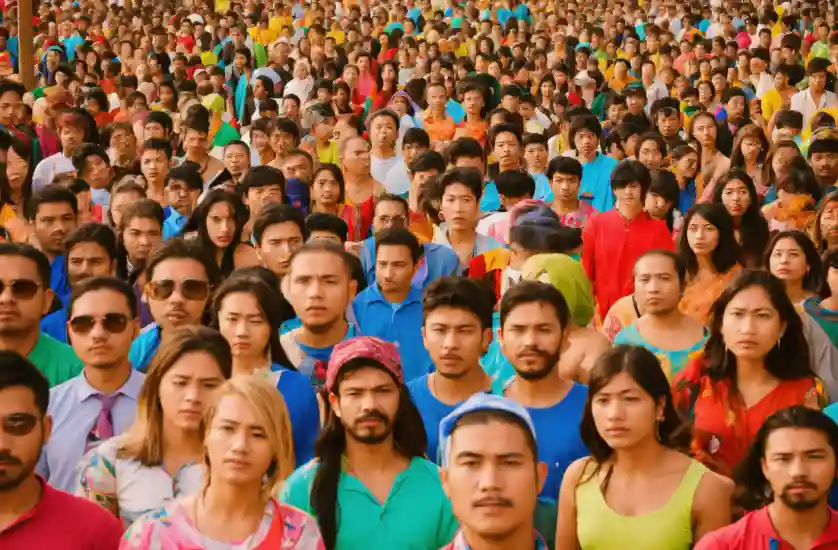A landmark Denmark law under which you can copyright your characteristics, promises to fight deepfakes, writes Satyen K. Bordoloi as he also explores its pitfalls.
In 2023, Bollywood icon Anil Kapoor unintentionally became a global AI icon. His claim to AI-fame? He stormed out of a Delhi courtroom after winning a legal monopoly on his own existence. The Delhi High Court granted him an omnibus injunction against anyone using his name, voice, likeness, or even his signature catchphrase “Jhakaas” without permission, especially using AI-generated deepfakes, GIFs, or voice clones.
Mr. Kapoor wasn’t just protecting future paychecks; he was defending personhood. “When I’m not there,” he later mused, “my family should have the right to protect my personality rights.” This landmark victory put him on TIME magazine’s 2024 list of the “100 Most Influential People in AI”, a rare distinction among tech titans.
Now, Denmark seems to have taken a leaf out of Anil Kapoor’s book as they are proposing that every citizen, not just celebrities, owns copyright over their face, voice, and gait. Is this truly Jhakaas (genius) or a judicial overreach?
The Kapoor Precedent – Personality Rights as Digital Armour
Kapoor’s case erupted right when deepfake scandals were beginning to sweep India. Alia Bhatt’s face was morphed into explicit videos, and Rashmika Mandanna’s likeness was hijacked for videos that went viral. Kapoor’s own persona faced industrial-scale theft: AI voice clones sold ringtones, forged autographs appeared on merchandise, and videographers used face-swapped videos starring “Anil Kapoor”.
The Delhi High Court’s ruling leaned not on copyright but on personality rights – a blend of privacy and property rights under Indian law. Crucially, it recognised that in the deepfake era, a person’s biometric essence – the timbre of one’s voice, one’s unique smirk, the swing of hips, perhaps even the spread of one’s arms a la Shah Rukh – is their intellectual property. Yet this shield has limits. It mainly targeted commercial misuse while exempting parody. Mr. Kapoor’s fame made him identifiable; hence, his likeness was protected. But should a factory worker in Ankleshwar wield the same power? Denmark says yes.
Denmark’s Gambit: Copyright as a Mass-Produced Shield
Denmark’s proposal, spearheaded by Culture Minister Jakob Engel-Schmidt, is the democratisation of Kapoor’s logic. Instead of personality rights (which favour the famous), their law grafts biometric features onto copyright frameworks. Thus, every Danish citizen would control their face, voice, and mannerisms, just as a novelist owns their manuscript. The law defines deepfakes as “very realistic digital representations” of a person and grants citizens the power to demand takedowns of unauthorised imitations. Violators face fines; platforms risk “severe penalties” for non-compliance. Protection has been given to parody and satire, which remain exempt.
The immediate appeal of this law is undeniable. Unlike laws targeting only malicious deepfakes, Denmark’s model makes all unauthorised replication illegal. This can serve as a strong deterrent for trolls and scammers. While Kapoor won because his “Jhakaas” was iconic, Denmark’s law would protect shy teachers and extroverted baristas equally – their fame irrelevant when it came to the law. And with the backing of the EU, possibly during Denmark’s upcoming presidential elections, this could become a standard for Europe, and who knows, someday, to the rest of the world. And maybe even you and I, sitting in India, could come under the ambit of a similar law.
The Copyright Mess – Is Biology Art?
But here’s where things get tricky: copyright was created for art, not arteries. Human faces aren’t “authored” (if they are, who’s the author?); they’re biological inheritances. As critics note, what happens when an AI generates a face vaguely resembling Ida from Copenhagen? Does she owe royalties to her genetic ancestors? Or consider lookalikes: if a Brad Pitt doppelgänger performs in ads, would he be forced to pay Brad royalties for the same? Legal chaos is a trigger away, as a person’s very existence threatens to become a licensing minefield.
Free speech advocates are naturally squirming. Imagine an artist’s deepfake satire of a corrupt minister is scrubbed off the internet for “infringing” upon the minister’s face-copyright. Denmark promises parody exemptions, but as Kapoor’s lawyers would themselves admit, the line between “critique” and “theft” is pixel-thin. And ask the team of Alia, Anil or Rashmika, and they’ll tell you how tracking anonymous deepfakers is like chasing ghosts in the darknet. This hints at the enforcement nightmares that await Denmark’s under-resourced regulators and law enforcement officials alike when this law is passed.
Global Laboratories
Beyond copyrights and possible legal swamps, Denmark isn’t alone in thinking about this. Legislators all over the World are cobbling together defences, either out of compulsion or as a pre-emptive measure. Take the EU’s triad of Transparency measures, where they have combined the AI Act (mandating deepfake disclosures), the Digital Services Act (platform accountability), and the GDPR (biometric data rights) to create something that avoids the bluntness of copyright, yet lacks the preventive bite of Denmark’s law.
Then there’s China, which is forcing all AI content to carry labels that can be traced by the state. This regulation takes effect on September 1 this year and applies to all types of data, including text, images, videos, audio, and even virtual scenes. I know, I know. It is chilling to consider what it means for privacy and dissent in the nation, but it is a measure that is on the table of governments worldwide in case AI misuse spirals out of control.
The US also has laws against AI misuse, but they are a patchwork rather than a uniform set of laws, with different states having varying regulations. For instance, Texas has criminalised election deepfakes. At the same time, the federal government has the No AI FRAUD Act, which establishes a federal framework to protect Americans’ rights to their likeness and voice against AI-generated ones. While India’s laws, thanks to the Anil Kapoor case, hint at a hybrid path of personality rights along with tech fixes, where Indian courts can now order domain seizures and ISP blocks against rule evaders.
Under the ever-copying neon glow of silicon chips, our faces have become the new terrain of our property. Yet, copyright – a tool to protect creativity, fits awkwardly in the biocentric domain of our bodies, voices, looks and gaits. How do you ‘copyright’ a human? What does it even really mean? And will the law, like that of Denmark, turn laughter into a licensed commodity (imagine comedian Jimmy Carr suing us if we laugh funny like him) and our identity into transactional goods?
The answers are not easy. How do you protect a person without imprisoning pixels? How do you prevent this important legal remedy from turning into a laughing stock where we’ll copyright the shape of our feet? The solutions may not be easy, but when found, we know what we’ll scream: jhakaas. Hope Mr. Kapoor doesn’t sue us when we do.
In case you missed:
- AI Taken for Granted: Has the World Reached the Point of AI Fatigue?
- In Meta’s Automated Ad Creation Plan, A Fully Transformed Ad World
- The Verification Apocalypse: How Google’s Nano Banana is Rendering Our Identity Systems Obsolete
- Forget Smart Homes – Welcome to Your ‘Feeling’ Home
- Why Elon Musk is Jealous of India’s UPI (And Why It’s Terrifyingly Fragile)
- AI as Cosmic Cartographer: Teen’s Discovery Illuminates Positive Power of Artificial Intelligence
- AI Washing: Because Even Your Toothbrush Needs to Be “Smart” Now
- One Year of No-camera Filmmaking: How AI Rewrote Rules of Cinema Forever
- Deep Impact: How Cheap AI like DeepSeek Could Upend Capitalism
- The Cheaper Than Laptop Robot Revolution: How China’s Unitree Just Redefined Our Future










